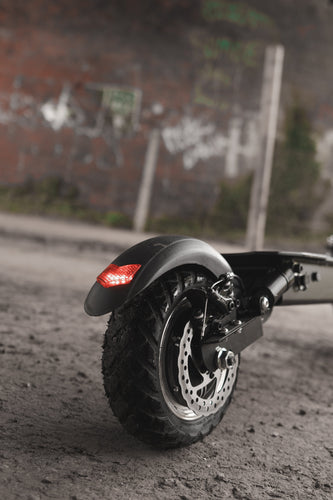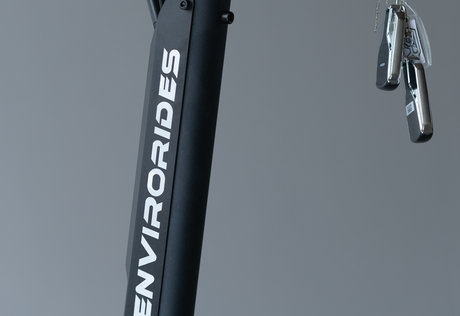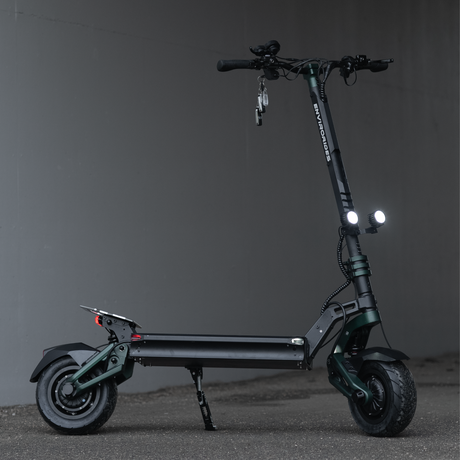When you bought your electric scooter, you probably imagined being able to get around quickly when the weather is warm. E-scooters are ideal for this kind of weather, giving you an escape from being in a stuffy car but without the inconvenience of having to walk.
However, Mother Nature doesn’t always want to play ball and even in the height of summer, rain isn’t uncommon. Does this mean you have to hide your electric scooter away out of sight at the first hint of moisture?
While it’s true that electricity and water don’t usually mix, it can be possible to ride electric scooters in the rain in some circumstances. Here’s what you need to know.
Can You Ride Electric Scooters in the Rain?
Let’s just say from the start: it’s not a good idea to ride an electric scooter in the rain. No e-scooter is completely waterproof and guaranteed to be always impervious to the rain, plus they’re difficult to handle. Scooters are intended for dry surfaces and aren’t very easy to handle on wet surfaces.
However, there may be some circumstances when it would be helpful to be able to use your e-scooter in the rain. Much depends on the type of electric scooter you have; some should not be used in the rain at all (see below) while others can perform quite well.
If your e-scooter is a model which is described as resistant to water, riding it in the rain or on wet surfaces is possible. But there are many factors to consider aside from whether the moisture will short-circuit your scooter.
Some of the most important points to think about when scooting in the wet include:
- Visibility - it’s important that you can see, and that others can see you. This means you should have bright lights fitted to your electric scooter, and you should never ride in low-visibility conditions. Be wary of vehicles with fogged up windows whose visibility is poor.
- Temperature - electric scooters don’t like cold weather. For an e-scooter which is rainproof, freezing temperatures will be more problematic than the moisture. Don’t ride in freezing rain, or else you could find that your electrics completely shut down.
- Large pneumatic tyres - it can be slippery while riding in the wet, and you should slow your speeds down and take corners more carefully. Large pneumatic tyres will help to steady your scooter and prevent it slipping out from underneath you in the wet.
- Grippy decking - your scooter might normally feel quite secure, but when your decking gets wet it might get quite slippery, sending you in the opposite direction to your scooter. Look for a deck with a good, rubbery grip to keep you secure underfoot in the rain.
Are All Electric Scooters Waterproof?
By now, you might be wondering if your electric scooter is rainproof - to get the answer, you’re going to need to look at the spec. There’s no failsafe way to tell if an electric scooter is waterproof simply by giving it a quick glance.
Every e-scooter should have an IP rating; this will tell you how well it handles moisture of any kind. If there’s no IP rating provided, it’s safe to assume that your scooter doesn’t like the wet!
Every IP rating is made up of two numerical figures - the first one indicates how much dust and debris is kept out, the second one deals with water resistance. It’s worth mentioning that an IP rating is used for lots of different types of equipment, it’s not unique to electric scooters.
To be able to use your e-scooter in the rain, you’ll need a second IP number of between 4 and 8, the higher, the better. The numbers equate to the following levels of protection:
- 4 - protected against water splashes
- 5 - protected against low-pressure water jets
- 6 - protected against high-pressure water jets
- 7 - protected if immersed in water for a short period
- 8 - able to withstand being immersed in water for long periods
For example, you would expect the EVR Pro Off Road Electric Scooter to have quite good levels of waterproofing to deal with the more challenging terrain - and you’d be right. The electric scooter is rated as IP66, which means it is totally protected from dust (the first number) and is also protected against high pressure water jets (the second number).
In contrast, the G2 Pro Electric Scooter is rated as IP54. This means it has some protection against dust and can cope with water splashes (but not heavy jets of water).
Any scooter which has an IP rating on the second figure of less than 4 should not be exposed to the wet at all.
Do Your Checks
Even if you have an electric scooter which is waterproof, there’s no denying the fact that scooters operate at their best in clean, dry conditions. Therefore, it’s highly advisable to wipe down your e-scooter when you get home to remove any water. You should also check it regularly for any signs of damage or corrosion.
Waterproofing is great, but damage can still


